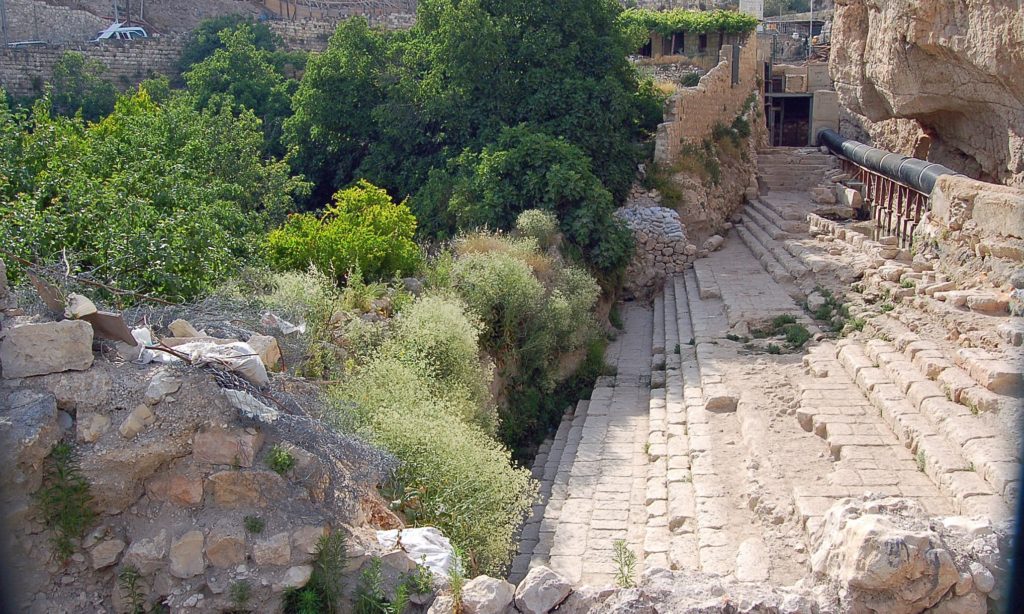
The Pool of Siloam is one of the most popular sites in Jerusalem for Christians following the path of Jesus. Until recently, some people claimed the famous pool was a fiction.
According to the Gospel of John, when Jesus was in Jerusalem he encountered a man who had been blind since birth. Jesus mixed his saliva with mud, put the mixture into the man’s eyes and asked him to wash in the Pool of Siloam, a word meaning “sent.” The man did as instructed and gained his sight. The pool was destroyed when the Romans entered Jerusalem in 70 A.D. to put down the First Jewish Revolt. Eventually, the pool site was covered with silt and its location lost. In the fifth century, using clues from the Hebrew Scripture that an earlier Pool of Siloam was at the end of the Siloam Tunnel, Byzantine Empress Aelia Eudocia ordered construction of a small pool and a church on the southern end of the City of David, the oldest part of Jerusalem, to commemorate Jesus’s miracle. Skeptics, pointing out that a first century pool had never been found, argued that the author of the Gospel of John had invented the idea of the Pool of Siloam to make the theological point that Jesus had been sent by God.
In 2004, workers repairing a sewage pipe at the southern end of the city of David uncovered steps near the Siloam Tunnel about 200 yards from the pool created by Empress Eudocia. Archeological excavations revealed that the steps were part of the Pool of Siloam at the time of Jesus, its age confirmed by first century Roman coins found in the pool. The pool itself is trapezoidal in shape, with a width of 225 feet, far larger than had been expected based on Eudocia’s pool. The skeptics are silent.